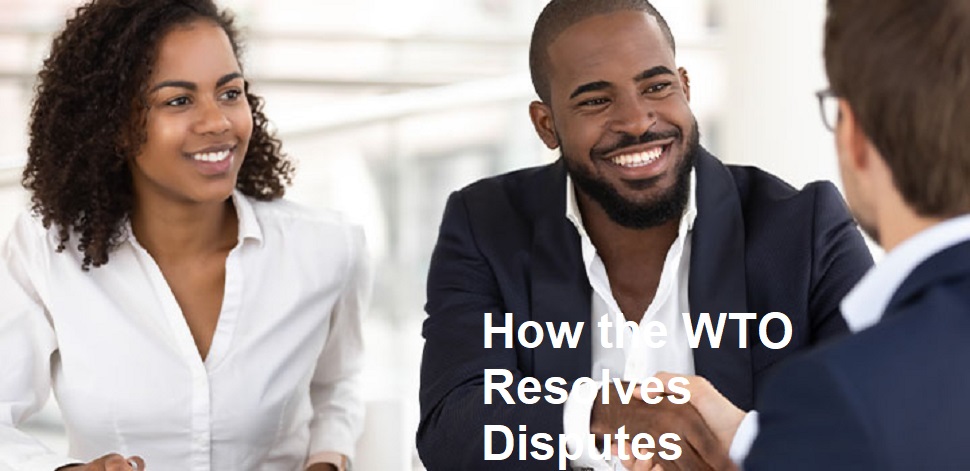The World Trade Organization (WTO) is an international organization founded in 1995 with the primary aim of becoming a global forum for regulating and supervising international trade. The WTO replaced the General Agreement on Tariffs and Trade (GATT) which focused mainly on regulating import tariffs. By transforming into the WTO, the organization’s scope and role were broadened to cover other aspects of international trade such as services, intellectual property rights and investments.
One of the main functions of the WTO is as a forum for trade negotiations between member countries. Through rounds of negotiations, countries try to reach agreements on market access, reducing trade barriers, and other trade regulations. An example of a significant round of negotiations is the Doha Development Agenda which began in 2001 and aims to provide special benefits to developing countries by reducing trade barriers and increasing their participation in international trade.
In addition, the WTO also has an important role in supervising and ensuring the implementation of trade agreements that have been agreed upon by member countries. This includes monitoring compliance with trade commitments, identifying potential new trade barriers, and assisting member countries to address issues that arise during agreement implementation.
Another important aspect of the WTO’s role is as an international dispute settlement mechanism. If there is a dispute between member countries regarding the interpretation or implementation of a trade agreement, the WTO provides a formal and structured procedure for resolving the dispute. Usually, an independent panel of experts is appointed to investigate the dispute and issue a decision that is binding on the parties to the dispute.
WTO Negotiation Process
The trade negotiation process at the WTO is one of the three main pillars of this organization’s performance, in addition to overseeing the implementation of agreements and dispute resolution. The negotiations took place through regular rounds of negotiations. At each round, member countries come together to discuss trade issues that are considered important and seek win-win solutions for all parties.
One of the most important and well-known rounds of negotiations is the Doha Development Agenda (Doha Round), which began in November 2001 in Doha, Qatar. The main aim of this round is to discuss a number of issues that are considered important for developing countries and help them become more involved in the global trading system.
The Doha Development Agenda places attention on three main areas:
1. Market Access: The aim of this round is to open up market access for developing countries so that they can increase their exports and benefit from international trade. The discussion involved the issue of tariffs (import duties) and non-tariffs (barriers other than import duties) imposed by developed countries which often become obstacles for developing countries’ exports.
2. Agriculture: The issue of agriculture is an important focus in the Doha Round because many developing countries have the agricultural sector as the backbone of their economy. The talks seek to address the problem of large agricultural subsidies from developed countries, which can make it difficult for developing countries to compete in global markets.
3. Services: This round also looks at services, such as financial services, telecommunications, and transportation. Developing countries are working to gain better access to global service markets and reduce barriers in these sectors.
How the WTO Resolves Disputes
The dispute settlement mechanism at the WTO is an integral part of the international trading system regulated by this organization. The aim of this mechanism is to provide a structured and fair legal framework for member countries to resolve international trade disputes arising under WTO rules.
The following are general steps in the WTO dispute settlement mechanism:
1. Consultation: When a trade dispute arises between two member countries, the first step is to engage in informal bilateral consultations to try to resolve the dispute peacefully. These countries should try to reach a solution during the consultation period which usually lasts 60 days.
2. Third Approach: If bilateral consultations do not result in an agreement, the disputing countries may seek the assistance of a third party, usually in the form of a mediator or facilitator who will assist them in finding a mutually acceptable solution.
3. Panel of Experts: If consultations and third approaches fail to resolve the dispute, the disputing countries may request the establishment of an independent panel of experts. This panel of experts is composed of international law experts who are not affiliated with the disputing governments. The task of the panel is to investigate in depth the issues in dispute, collect evidence and information, and issue binding decisions based on WTO laws and rules.
4. Appeal Review: Both the complaining country and the defendant country have the right to review the decision of the panel of experts. This section is known as the appeals review procedure, whereby an appellate panel consisting of three different members of the panel of experts, will review the panel’s decision and ensure that it complies with WTO law and principles.
5. Implementation of the Decision: Once the appeals review process is complete and the final decision is issued, the complaining country is expected to implement the decision. If the defended country does not comply with a WTO decision, the complaining country may seek permission to enact retaliatory measures against the defended country as a form of reprimand.
Examples of cases that have been resolved by the WTO through the dispute settlement mechanism include various trade issues such as disputes regarding agricultural subsidies granted by certain countries, trade barriers related to quotas or import duties, and intellectual property rights disputes involving patent or trademark infringement. Dispute resolution through the WTO mechanism is important to create stability and fairness in international trade and to maintain adherence to the rules agreed upon by member countries.








